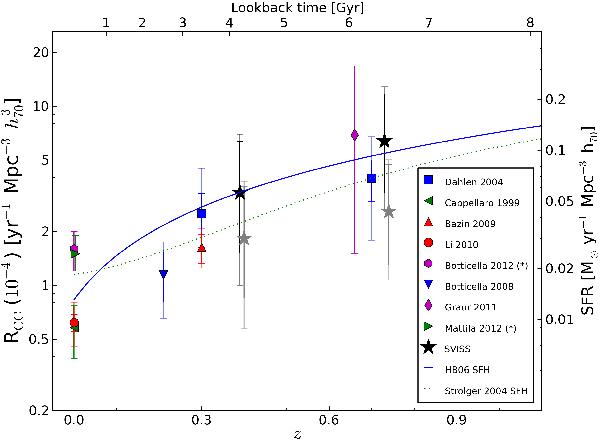Fig. 3

Core collapse supernova rates determined from the SVISS SNe (black stars). Grey stars are displaced by + 0.01 in z and show the SVISS rates without extinction correction. Also shown is a collection of measured rates from other authors. We plot star formation histories from two different sources, scaled to supernova rates through the use of Eq. (2). Error bars are statistical with total errors (statistical and systematic added in quadrature) as a transparent/faded extra error bar for all surveys. Redshift bin sizes are not shown, but are given in Table 3. The rate from Cappellaro et al. (1999) has been rescaled from SNu to a volumetric rate by assuming a local B-band luminosity density 2.0 × 108 h70 L⊙ Mpc-3 at redshift ~0. The local CCSN rates from Botticella et al. (2012) and Mattila et al. (2012) have been measured in small volumes and are likely dominated by inhomogeneity. The star formation rate in the local volume is higher than the average over an extended volume and can therefore cause the SNR to be higher than expected.
Current usage metrics show cumulative count of Article Views (full-text article views including HTML views, PDF and ePub downloads, according to the available data) and Abstracts Views on Vision4Press platform.
Data correspond to usage on the plateform after 2015. The current usage metrics is available 48-96 hours after online publication and is updated daily on week days.
Initial download of the metrics may take a while.


